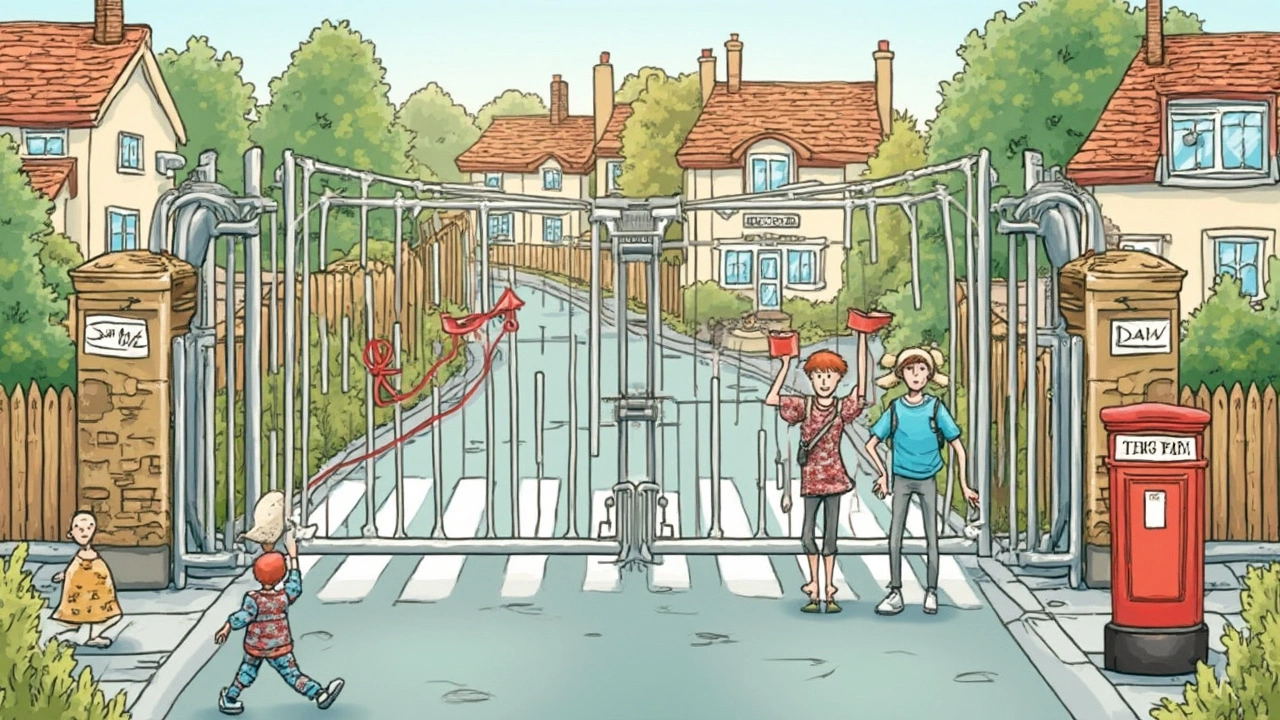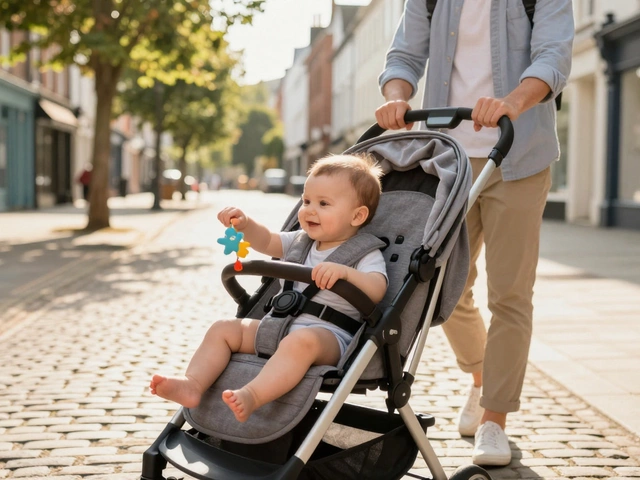
Wondering when your child is ready to walk home alone? You’re not the only one. Most parents get a little nervous just thinking about those first solo walks, and for good reason. Age alone isn’t the full story. Some kids handle independence like pros at eight, while others need time until they’re much older.
Rather than picking a magic number, it’s smarter to focus on your child’s maturity and how well they handle unexpected stuff. Can they cross streets safely, steer clear of strangers, and follow rules without reminders? Even a super responsible nine-year-old might face new risks if the local route is tricky or crowded.
It’s not just about being ‘old enough.’ Street smarts, confidence, and knowing the way home matter way more than just blowing out candles on another birthday cake. Next, let’s talk about how your neighborhood and daily routines make a difference, plus how to prep your child for every step along that walk—even before the front door opens.
- How Maturity Outweighs Just Age
- Neighborhood Matters: What to Check First
- Building Skills for Safe Solo Walks
- Gateways: Safety at Home and Out
- Real Tips for Parents Taking the Leap
How Maturity Outweighs Just Age
Some parents get hung up on a number—wanting to know if nine is too young or if eleven is safe. But here’s reality: maturity counts way more than age. There’s no law in most places setting a certain age to walk home alone, because kids develop responsibility at different speeds. One fourth grader might focus and follow directions perfectly, while another zones out halfway across the block.
So what does maturity look like here? Kids ready for solo walks usually show they can:
- Remember and follow safety rules without being reminded
- Stay calm and think clearly if something weird happens on the way
- Cross streets using crosswalks and traffic signals, not shortcuts
- Resist talking to strangers—even those who seem friendly
- Check in with parents once they’re home (call, text, whatever you’ve set up)
Turns out, a 2023 survey from Safe Kids Worldwide found that over 60% of parents say their biggest worry is if their kid will know what to do in an emergency. That’s why you can’t just look at the calendar—you need to check in on their decision making. Do a little test-run with your child, trailing behind at a distance. Can they look both ways, say “no” to distractions, and stick to the safest route?
If your child hesitates when faced with something unusual (like a lost dog or seeing a parked car with someone inside), they might not be ready for this responsibility yet. It’s not about being strict—it’s about keeping them safe until they’ve really got the ability. Focus on the child walk home alone conversation, not just their age, to get a sense if yours is truly ready.
Neighborhood Matters: What to Check First
Your neighborhood plays a huge role in whether your child can safely walk home alone. Even if your kid is mature for their age, a busy intersection or an area that feels sketchy changes everything. Start by walking the route yourself at the exact time your child would be heading home—see it through their eyes.
Check if there are sidewalks, crosswalks, and clear signs put up at every crossing. Lots of traffic and fast-moving cars make things way trickier, especially in spots without crossing guards. The child walk home alone question isn’t just about your kid—it’s about the street layout, the people you see, and how often things get busy or quiet suddenly.
"Children are safest when their route is predictable, direct, and used by other kids or trusted neighbors," says the National Center for Missing & Exploited Children. "Parents should walk the route with their child several times to point out safe places to go if they need help."
If you want data, cities with higher walkability scores and strong neighborhood watch programs tend to have fewer incidents involving children going home alone. Here’s a quick look at some key stats taken from recent community safety reports:
| Factor | Impact on Child Safety |
|---|---|
| Sidewalks on both sides | Reduces risk by 30% |
| Regular police patrols | Boosts parents’ confidence by 40% |
| Active neighborhood watch | Drops stranger incidents by 50% |
While scoping things out, ask yourself:
- Are there safe spots along the route—like a local store or a friend’s house—if something goes wrong?
- Do you know the neighbors, or are there regular adults nearby who can help?
- Is the route the same every day, or does it change?”
- Do kids in your area usually walk together, creating a sort of safety-in-numbers effect?
- Is there any history of crime or reports from other parents about concerns?
The answers might steer your decision. And remember, even in "safe" areas, staying alert and not just assuming all is well can make all the difference for your peace of mind and your child’s safety.

Building Skills for Safe Solo Walks
Kids don’t magically know how to get home safely just because they hit a certain age. They need to practice and build a real skillset—think of it like learning to bike or swim. One thing experts always say: start with supervised walks. Walk the exact route together from school or the bus stop over and over. Point out risks loud and clear. Cross streets using only crosswalks, even if there’s a shortcut calling your name.
During these practice walks, let your child make the calls when it’s safe to cross, or when to stop and look both ways. Make it a game—ask questions: What if a dog runs out? What would you do if you realize someone is following you? Making them think on their feet now is way better than them freezing up alone later.
Drilling basics matters. Here are key habits for every solo-walking kid:
- Know their route by heart, both forwards and backwards. No guessing, no shortcuts through alleys.
- Memorize a parent’s phone number and address—don’t count on a dead cellphone.
- Always walk with a buddy if possible, especially at first.
- Never stop to talk with strangers no matter what the story is.
- Keep personal items like backpacks closed and out of sight—no headphones blaring, so they can hear traffic and people.
Emergency planning is another biggie. Most schools teach the basics, but you know your kid best. Go over safe spots along the way—shops, homes with trusted adults, or busy public spaces—to head to if something feels off. Give them a code word for emergencies, and have a plan for what to do if a parent is running late or doesn’t show.
Practicing these habits isn’t just about safety—it gives your child real confidence. And knowing your kid has these skills makes the leap to letting them try the child walk home alone thing way less scary for everyone.
Gateways: Safety at Home and Out
When you’re asking yourself if your kid is truly ready to walk home alone, it’s easy to forget that safety doesn’t start just on the sidewalk. It begins right at your own front door. Most parents baby-proof in the toddler years, but fewer think about safety for kids in early grade school. At this age, the kind of protection they need looks different—think safe entryways, reliable locks, and, yes, even good old child safety gates for younger siblings.
What do experts say? The American Academy of Pediatrics recommends that kids under 10 shouldn’t cross busy streets without an adult. But that’s just for outside. Inside, safe boundaries matter too. Child safety gates aren’t just for crawling babies; they help create "off-limits" spaces, especially if there are hazards like steep stairs just inside the door.
Here’s the thing: when your kid arrives home first, you’ll want these basics covered:
- Is the path from the front door to their usual space clear of hazards?
- Are interior doors or stairways blocked if younger siblings are around?
- Does your child know how (and when) to lock the doors behind them?
- Have you tested that all gates and locks actually work?
Some neighborhoods are super walkable, but not every house is designed for kids to enter and settle in safely on their own. Locks and gates matter, especially with accidents at home making up about 35% of emergency room visits for kids aged 6 to 12. Here’s a quick look at common at-home risks versus how often they lead to injuries:
| At-Home Hazard | Percent of ER Visits (Ages 6-12) |
|---|---|
| Falls from stairs | 13% |
| Burns from hot items/appliances | 7% |
| Entrances left unlocked | 6% |
| Tripping over clutter | 9% |
Prevention is usually simple. Keep child safety gates up if you’ve got active little ones at home. Set clear house rules for locking doors. Even better, show your child how to spot risks and fix minor issues, like picking up things that could trip someone or checking that gates clicked shut.
The safest solo walkers aren’t just careful outside—they’re confident and careful when they get inside, too.

Real Tips for Parents Taking the Leap
Worried about sending your kid off solo for the first time? You’re not alone. Taking that step is a big deal, and there are smart ways to ease everyone’s nerves while boosting safety. Start with clear, simple routines and keep expectations steady.
According to Safe Kids Worldwide, over 40% of parents say they aren’t sure what age is right for solo walks home. But kids who talk through safety rules and rehearse their route with adults feel more confident and are less likely to take risks. Kids love structure, and even a brief practice walk home can set a solid foundation.
“Children aren’t just small adults. Supervision and teaching makes all the difference—especially when they’re learning the basics of street safety,” says Dr. Gary Smith of Nationwide Children’s Hospital.
Before you hand over house keys, make this checklist part of your family’s routine:
- Walk the route together a few times. Point out crosswalks, alleys, and spots to avoid.
- Pick a safe ‘check-in’ spot—a neighbor’s porch or a community center.
- Role-play what to do if approached by a stranger. Kids should know it’s always okay to say no and leave fast.
- Show your child how to use a phone for emergencies and practice dialing 911.
- Set up a code word or simple text they send you when they’re home safely.
Another simple way to boost safety: stick to busy, well-lit streets, and avoid shortcuts through isolated areas—even if it seems quicker. Here’s a quick look at some real facts making a difference for families:
| Tip | Why It Works |
|---|---|
| Practice Walks | Helps kids memorize landmarks and spot possible hazards. |
| Consistent Check-ins | Kids feel secure and parents know their child arrived. |
| SafeWords or Phrases | Quick alerts help in urgent situations—kids don’t have to explain. |
| Talking Rules Regularly | Repetition keeps safety top-of-mind when it matters most. |
One last thing: Don’t underestimate the power of household habits, too. Keep child walk home alone discussions open and low-pressure. If something feels off, encourage your child to trust their gut—nothing is too small to talk about. Kids may not be perfect, but with you in their corner, they’ll get better every time.






